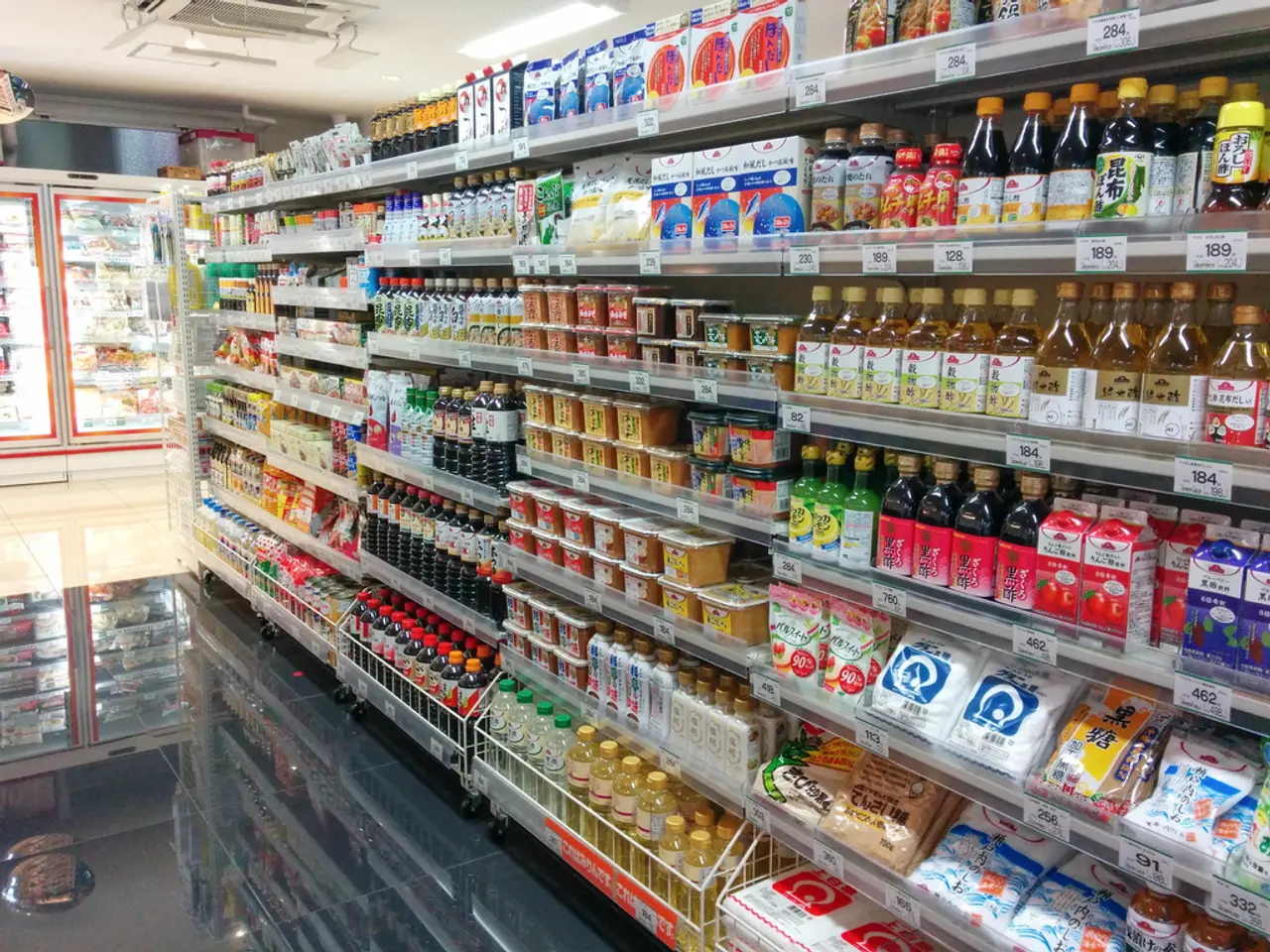Steady consumer inflation in the US, yet ongoing tariff threats loom over the economic landscape
In a recent development, the consumer price index (CPI) figure for July stood at 2.7%, a touch below the 2.8-percent rate expected by analysts. However, experts have warned that this cooler CPI figure could point to a slowing economy. This caution comes as analysts closely watch CPI numbers, given increasing fears over the reliability of economic data from the Trump administration.
The anticipated impact of Trump's tariffs on consumer prices is a modest but meaningful increase. According to the Yale Budget Lab, an estimated 1.8% overall price rise in the short run could equate to an extra cost of roughly $2,400 per household in 2025. This price increase results mainly from higher tariffs raising import costs, which companies initially try to absorb or offset through inventory stockpiles but eventually pass through to consumers.
Experts expect these price hikes to become more apparent in late summer and early fall of 2025, as stockpiled goods run out and companies can no longer maintain profits by absorbing tariff costs. Certain goods, particularly apparel and footwear, are already seeing significant price increases, and prices for these categories are expected to remain elevated into the long run. Other product categories, such as automobiles, may also see price increases in the fall.
The pass-through of tariffs to consumer prices happens gradually and unevenly across different product categories. Some retailers delay price increases to hold onto customers, but as inventories dwindle and profits shrink, tariffs will more fully pass onto consumers with price hikes occurring at different times rather than all at once. California and other states already face notable economic impacts from these tariff-driven costs, with increased expenses and job losses.
Meanwhile, Trump has ordered a 10-percent tariff on goods from almost all trading partners, including Japan, South Korea, and the European Union. Diane Swonk, KPMG chief economist, predicts "brace for more price hikes as we move into late summer and early fall." Swonk also expects a faster pass-through of recent tariff increases due to less time for stockpiling.
In a related development, the Federal Reserve (Fed) is considering a quarter-point cut at its next policy meeting in September, according to CME's FedWatch tool. This move could be a response to the potential weaker demand from the labor market, as a September interest rate cut from the Fed is possible, but only if there is much weaker demand from the labor market.
In July, shelter costs rose, while indexes for energy and gasoline dropped. Indexes that rose over the month included medical care, airline fares, and household furnishings according to the Labor Department report. Many companies are planning to pass along higher costs to their customers.
In conclusion, consumers should anticipate a gradual price increase throughout late summer and into fall 2025 driven by the tariffs, with some categories like clothing and footwear experiencing especially sharp impacts. The overall inflationary effect is projected to be significant but not a sudden shock across all goods simultaneously.
Read also:
- Deepwater Horizon Oil Spill: BP Faces Record-Breaking Settlement - Dubbed 'Largest Environmental Fine Ever Imposed'
- Weekly activities in the German federal parliament
- Escalating Political Instability and Polarization Intensify the Threat of an Uncontrolled Shift Towards Sustainability
- Authorities are currently probing the factors behind the lethal Pennsylvania steel factory blast that claimed the lives of 2 individuals.




